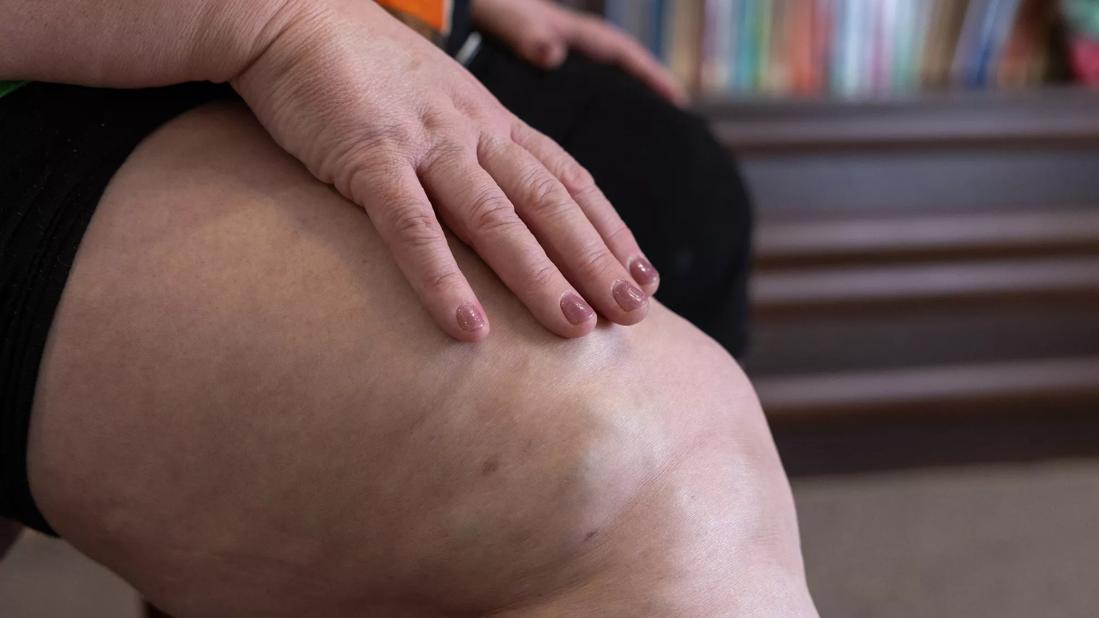More report a clinically meaningful change in function at 90 days compared to patients with lower BMI

Higher body mass index (BMI) conventionally has been linked with higher risk of infection and other complications after total knee arthroplasty (TKA). Knee replacement is more technically challenging in patients with larger body habitus. So is wound healing. As a result, some in the orthopaedic community have adopted a dogmatic approach, generally considering patients for TKA only if they have a BMI of 40 or lower.
Advertisement
Cleveland Clinic is a non-profit academic medical center. Advertising on our site helps support our mission. We do not endorse non-Cleveland Clinic products or services. Policy
“BMI limits have been set due to fear of poor outcomes,” says Nicolas S. Piuzzi, MD, Director of Cleveland Clinic Adult Reconstruction Research (CCARR). “Of course we want to minimize risk for patients, but hard limits can be controversial. Lower BMI cutoffs can reduce complications but will limit access to complication-free TKA for many patients.”
A 2018 study showed that 14 times more patients with a BMI of 40 or higher were denied a complication-free total joint arthroplasty than the number protected from a surgical complication.
Although demand for TKA among patients with obesity continues to increase, obesity’s impact on patient-reported outcome measures (PROMs) is not clear. Studies provide conflicting results — from greater improvement in pain and function for patients with lower BMI, to greater improvement for patients with higher BMI, to no difference between BMI categories.
In a recent study published in The Journal of Arthroplasty, the CCARR team attempted to clarify the association between BMI and TKA outcomes by assessing PROMs over time. They found that patients with higher BMI had greater earlier (90-day) improvement and satisfaction in function and pain compared with patients with lower BMI. At one year after TKA, there was no difference in outcomes between BMI categories.
“Patients with obesity improved more quickly than patients with lower BMI,” says Dr. Piuzzi, senior author of the study. “Earlier studies have indicated outcomes at 12 months after TKA. Ours is the largest study to date to show results at earlier timepoints.”
Advertisement
The researchers studied more than 2,000 patients who had total knee arthroplasty, grouped into six categories by BMI.
They compared the groups’ average patient-reported scores for function (Knee Injury and Osteoarthritis Outcome Score for Joint Replacement; KOOS, JR), satisfaction and pain before surgery and at various points after surgery. They found:
Preoperatively, the higher the BMI, the worse the joint function, satisfaction and pain.

Three months after TKA, there was no significant difference in joint function, satisfaction and pain scores between BMI categories. However, the relative improvement in function and pain scores was greater the higher the BMI. More than 85% of patients with obesity class III achieved a clinically meaningful change in function (defined as a change of at least 6.0 on KOOS, JR) at three months, compared to less than 77% of patients with normal weight.

Twelve months after TKA, there was no significant difference in joint function, satisfaction and pain scores between BMI categories. However, the relative improvement in function continued to be greater the higher the BMI. At one year, more patients with obesity (classes I, II and III) continued to have clinically meaningful change in function (94.5%, 91.5% and 92.0%, respectively), compared to patients with normal weight (86.7%).

Similar findings were reported for patients having total hip arthroplasty, according to another recent study by the CCARR team. Patients with higher BMI reported greater improvement in pain after hip surgery compared to patients with lower BMI.
Advertisement
“Patients with higher BMI improved more than patients with lower BMI, so that can support performance of total knee arthroplasty in patients with obesity,” Dr. Piuzzi says. “This doesn’t mean that we should do surgery on every patient with obesity right away. Those with higher BMI can have longer hospital stays, more non-home discharge and more complications. Therefore, we need to optimize risks through a multidisciplinary approach, focusing on overall health improvement before surgery.”
Patients with obesity may not be well nourished, he notes. They may need to be optimized for nutrition, diabetes control and other factors before being considered for surgery.
“BMI alone isn’t a reason to decline patients for joint replacement,” he concludes. “Patients with higher BMI may have more difficult cases and require more time and resources, but our data show that good outcomes are possible, providing even greater benefits compared to other patients.”
Advertisement
Advertisement

Self-care may be just as effective for some patients

Most return to the same sport at the same level of intensity

Largest cohorts to date reveal low rates of major complications

Patient climbs Mount Kilimanjaro 8 months after surgery

Sports medicine pioneer John Bergfeld, MD, shares how orthopaedics has changed since doing his first ACL repair in 1970

How to diagnose and treat crystalline arthropathy after knee replacement

Special glasses allowed surgeon to see 3D models and anatomic data superimposed on surgical field

When procedure is performed by high-volume surgeons, outcomes are comparable to total knee replacement